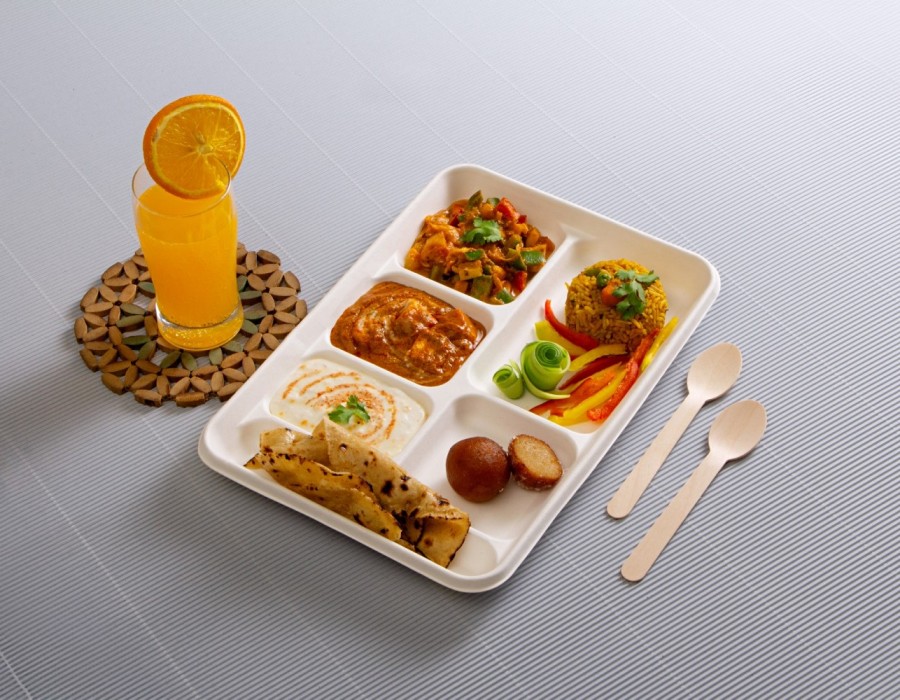Introduction
As eco-friendly alternatives like sugarcane plates gain popularity, many consumers and businesses are asking the important question: are sugarcane plates safe for hot foods? This blog explores the heat resistance of sugarcane plates, why they are suitable for serving hot meals, and how they compare to traditional disposable tableware like plastic and foam.
The Heat Resistance of Sugarcane Plates
Sugarcane plates, also known as bagasse plates, are made from the fibrous residue left after extracting juice from sugarcane stalks. This natural byproduct is pressed and molded into durable, eco-friendly plates. One of the standout features of sugarcane plates is their ability to withstand heat. These plates are designed to handle hot foods without warping, melting, or releasing harmful chemicals, making them a safe choice for serving everything from hot soups to grilled dishes.
Sugarcane plates can typically withstand temperatures up to 200°F (93°C), which is more than adequate for most food service needs. Whether you're serving a steaming plate of pasta or a freshly baked pie, sugarcane plates maintain their shape and integrity, ensuring a safe and pleasant dining experience.
No Harmful Chemicals or Leaching
One of the key concerns with traditional plastic and foam plates is the potential for chemical leaching, especially when exposed to high temperatures. Plastics, in particular, can release harmful substances like BPA (Bisphenol A) when they come into contact with hot foods or liquids. Foam plates, on the other hand, can deform and release toxic chemicals into the food.
Sugarcane plates, however, are free from harmful chemicals and additives. Made from 100% plant-based materials, they do not leach toxins into food, even when exposed to heat. This makes them a much safer option for both consumers and the environment. Furthermore, their natural composition means they are fully biodegradable and compostable, unlike plastic and foam, which can take hundreds of years to break down.
Durable and Sturdy for Hot Foods
Another advantage of sugarcane plates is their durability. Despite being lightweight, they are sturdy enough to hold hot, heavy meals without bending or breaking. This is particularly important for caterers, restaurants, and event planners who need reliable tableware for hot dishes. Unlike paper plates, which can weaken and absorb moisture from hot foods, sugarcane plates retain their strength and structure, ensuring no mess or leaks.
Whether you're serving a piping-hot roast or a plate of stir-fried vegetables, sugarcane plates provide a sturdy, reliable option that can handle the heat without compromising on safety or sustainability.
An Eco-Friendly and Practical Alternative
In addition to their heat resistance, sugarcane plates offer significant environmental benefits. They are made from renewable resources, reduce agricultural waste, and are fully compostable. After serving their purpose, these plates can be composted along with food scraps, breaking down naturally in a matter of weeks.
For eco-conscious consumers and businesses, switching to sugarcane plates is not just a practical choice, but a sustainable one. Their ability to withstand heat makes them a versatile option for both hot and cold foods, eliminating the need for plastic or foam alternatives.
Conclusion: A Safe, Heat-Resistant Choice for Hot Meals
Sugarcane plates are not only a sustainable alternative to traditional disposable tableware, but they also excel in heat resistance. Safe for use with hot foods, they do not leach harmful chemicals and maintain their structural integrity even under high temperatures. For anyone looking to make a switch to eco-friendly tableware without sacrificing practicality, sugarcane plates are a perfect choice.





Comments